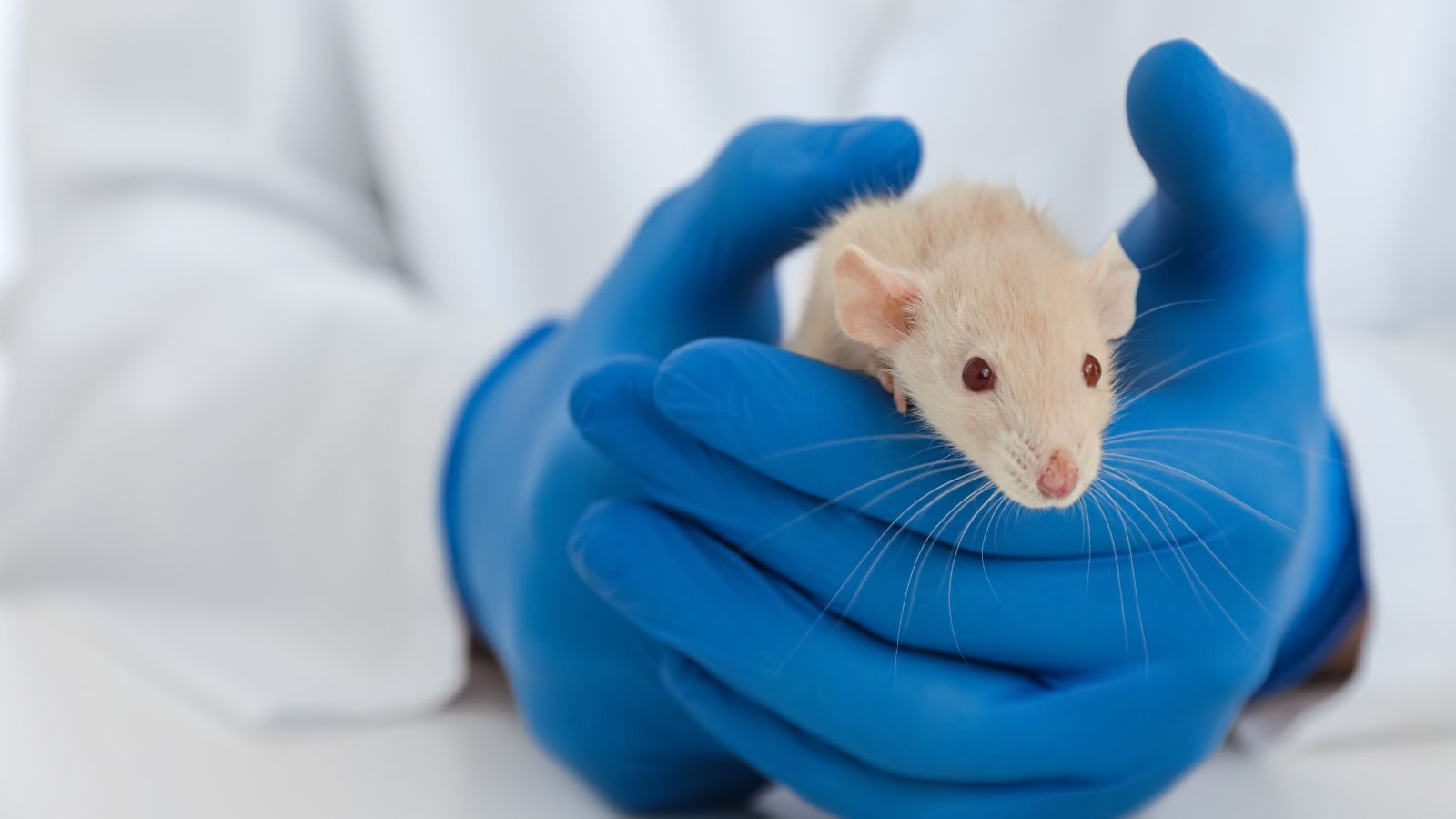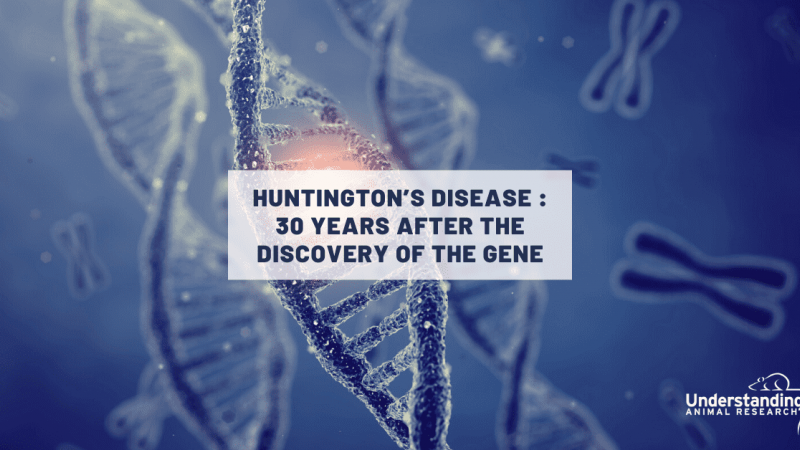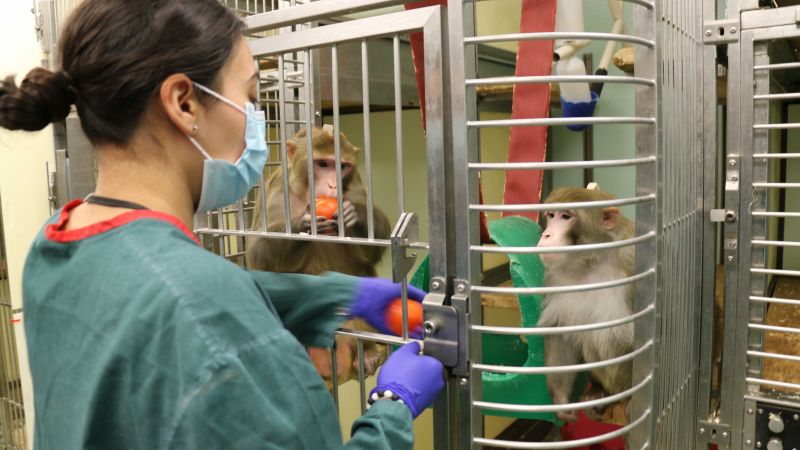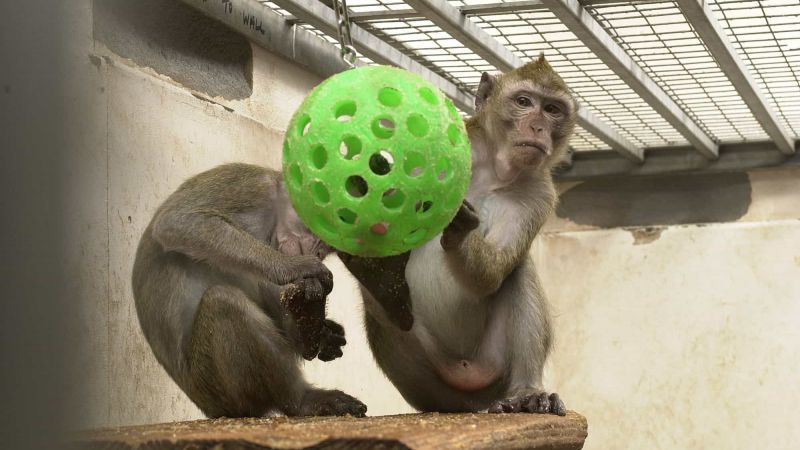
Huntington’s disease has been successfully treated for the first time using a one-time gene therapy first tested in animals. Preliminary clinical results from a small trial showed evidence that the brain disease’s progression can be slowed by up to 75% in patients after three years.
Huntington's disease is a rare genetic condition that causes progressive neurodegeneration. A mutation turns a normal protein needed in the brain – called the huntingtin protein – toxic. The mutated huntingtin protein accumulates in harmful clumps inside brain cells. This leads to memory loss, difficulty walking, slurred speech, and other afflictions. Symptoms worsen over time and are usually fatal after a period of about 20 years. There is currently no cure for the disease.
The gene that causes Huntington’s disease was identified in 1993. Soon afterwards, mouse studies showed that switching off the mutant huntingtin protein – even after symptoms had begun – could reverse signs and improve behaviour. This suggested that lowering levels of the toxic protein might slow or even partly reverse the disease. Yet for three decades, every attempt to develop a therapy failed to show convincing clinical benefit, until recently.
A new gene therapy is being widely reported as a breakthrough. If confirmed, this would not only be a landmark for the treatment of Huntington’s disease but potentially the first time a gene therapy has shown promise in any adult-onset neurodegenerative disorder.
A unique one-time gene therapy
Gene therapy treats disease by introducing, replacing, or removing genetic material from a person’s cells. The experimental treatment AMT-130, developed by the Dutch biotechnology company uniQure, targets and stops the production of the abnormal huntingtin proteins in the brain responsible for disease progression. It does so by supplying genetic material to brain cells that directs them to produce a specific microRNA molecule which can in turn intercept and disable the instructions for making the toxic protein.
This gene therapy is delivered deep inside the brain during a 12– 18 hour surgery to reach the brain regions first impacted by Huntington’s disease. Preliminary clinical results released by uniQure seem to show that one injection is enough to permanently lower levels of mutant huntingtin in the brain.
In the clinical trial led by Sarah Tabrizi at University College London, in which 17 people with Huntington’s received a high dose of the treatment, the therapy was successful in slowing the progression of the disease by about 75%, without significant side effects. Three years after the surgery, the researchers compared decreases in cognition, movement, and daily functioning with those of similar, untreated individuals. Declines you would normally expect in one year took four years following treatment, giving patients decades of extra high-quality life.
Results backed by animal safety and efficacy data
AMT-130 has been hailed as a breakthrough based on these – only preliminary – human results, but researchers are building on previous animal research which strengthens the evidence for the safe and potent huntingtin-lowering effects of this drug.
AMT-130 has been shown to be safe and to achieve widespread distribution throughout the brains of small and large animals. Rats and monkeys that underwent the surgery to deliver AMT-130 or a placebo and were monitored thoroughly for many months after the treatment, showed no safety issues during any of the imaging tests, health observations, or tissue examinations. These experiments, done in animals that do not carry the Huntington’s gene, tested the safety of the procedure, and confirmed the spread of the drug to many different brain structures.
The gene therapy also significantly reduced both normal and harmful huntingtin protein levels in transgenic minipigs with the disease, with long-lasting effects. This was particularly true in the regions of the brain affected by Huntington’s and targeted by the surgery where the drug was directly injected, but huntingtin was also lowered throughout the brain for up to a year after the surgery. Samples of the animals’ spinal fluid confirmed the decrease in the huntingtin protein.
Human and monkey cells also helped show that AMT-130 remained active as a genetic therapy for at least two years as the brain cells continued to produce the mRNA molecule that targets huntingtin. Finally, data from non-human primates helped estimate a scale-up factor for human delivery of AMT-130 gene therapy. The doses in the human study are based on doses given to animals and were found to be generally safe.
The future for a promising therapy
Together, the animal and human clinical data provide evidence that AMT-130 spreads efficiently throughout the brain and can lower huntingtin protein. In a press release, uniQure said it expects to submit an application to the US Food and Drug Administration early next year and, pending approval, the product could launch before 2027. However, it is still early days and a lot more testing is needed to see if there are side-effects of this new gene therapy, how long the benefits last and how well it works in the long term.
This is still excellent news for the approximately 75,000 people living with Huntington's disease in the UK, US and Europe, and the millions that live with other neurodegenerative conditions. If this gene therapy ultimately proves successful, it could lead to the development of similar therapies for Parkinson’s disease or other types of neurodegenerative diseases, also caused by the accumulation of toxic proteins.
Last edited: 4 November 2025 12:51





